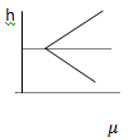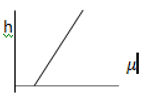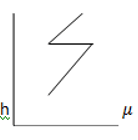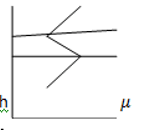This set of Antennas Multiple Choice Questions & Answers (MCQs) focuses on “Space Wave Propagation – Duct Propagation”.
1. Duct propagation is due to which layer?
a) Temperature Inversion layer
b) Higher atmospheric layer
c) Ionospheric layer
d) Surface water
View Answer
Explanation: Duct propagation is due to temperature inversion layer. Normal atmospheric temperature reduces at 6.5°C/km where as to provide duct wave propagation temperature must increase within 15-50m from earth surface. This layer occurs due to super refraction and at lower atmospheric layers.
2. Temperature inversion layer occurs due to _____
a) Super refraction
b) Reflection
c) Diffraction
d) Increase in altitude
View Answer
Explanation: Around 50m of height from earth surface temperature increases with height, at this level the EM waves tend to refract continuously than to reflect into ionosphere. This is termed as super refraction. Reflection and diffraction don’t affect the temperature inversion much.
3. In which of the following propagation temperature inversion layer is present?
a) Duct wave propagation
b) Sky wave propagation
c) Tropospheric scattering wave propagation
d) Space wave propagation
View Answer
Explanation: Duct propagation is due to temperature inversion layer. This layer occurs due to super refraction and at lower atmospheric layers. Around 50m of height from earth surface temperature increases with height, at this level the EM waves tend to refract continuously than to reflect into ionosphere. This is termed as super refraction.
4. How long the waves due to duct propagation travel following the earth curvature?
a) 1000km
b) 50m
c) 15m
d) 5000km
View Answer
Explanation: Duct wave propagation is possible for microwave frequency and is due to temperature inversion layer. The waves follow the curvature of earth up to 1000km long. This occurs at a height of 15- 50m above the earth surface.
5. Refractive index of temperature inversion layer is ____________
a) μ = (n-1+h/r)×106
b) μ = (n+1+h/r)×106
c) μ = (n-1-h/r)×106
d) μ = (n-1-h/r)×106
View Answer
Explanation: The modified refractive index for a temperature inversion layer is μ = (n-1+h/r)×106
Where n is the Refractive index, h is height and r is radius of earth.
6. Which of the following represents the plot of height v/s refractive index of elevated surface duct?
a) 
b)
c) 
d) 
View Answer
Explanation: Curves are used to determine the presence of duct propagation (T.I.L) and \(\frac{dμ}{dh}\) is -ve
 This is duct propagation with no elevation
This is duct propagation with no elevation Duct propagation with elevation
Duct propagation with elevation Normal atmosphere
Normal atmosphere7. Condition for duct propagation is _________
a) \(\frac{dμ}{dh}\) is -ve
b) \(\frac{dμ}{dh}\) is +ve
c) \(\frac{dμ}{dh}\) is zero
d) \(\frac{dμ}{dh}\) is unity
View Answer
Explanation:
The height v/s the refractive index graph of duct propagation is as follows

To determine the presence of duct propagation (T.I.L) and \(\frac{dμ}{dh}\) is -ve.
8. The wavelength of the EM signal propagation in the T.I.L for duct propagation is _________
a) \(λ=2.5h_d \sqrt{∆μ×10^{-6}} \)
b) \(λ=2.5h_d \sqrt{∆μ×10^6} \)
c) \(λ=5.2h_d \sqrt{∆μ×10^{-6}} \)
d) \(λ=25h_d \sqrt{∆μ×10^{-6}} \)
View Answer
Explanation: The wavelength of the EM signal propagation in the T.I.L for duct propagation is
\(λ=2.5h_d \sqrt{∆μ×10^{-6}} \)
Here ∆μ is change in the refraction index in height hd.
9. For duct propagation the necessary condition is \(\frac{dμ}{dh}\) is always +ve.
a) False
b) True
View Answer
Explanation: To determine the presence of duct propagation (T.I.L) and \(\frac{dμ}{dh}\) is -ve

This occurs at a height of 15- 50m above the earth surface and at lower atmospheric layers.
10. Duct propagation occurs at __________
a) lower atmospheric layers
b) higher atmospheric layers
c) ionospheric layers
d) any part of the atmospheric layer
View Answer
Explanation: Duct propagation occurs at lower atmospheric layers at 15 – 50m above the earth surface. It occurs due to temperature inversion layer. The waves follow the curvature of earth up to 1000km long.
Sanfoundry Global Education & Learning Series – Antennas.
To practice all areas of Antennas, here is complete set of 1000+ Multiple Choice Questions and Answers .
If you find a mistake in question / option / answer, kindly take a screenshot and email to [email protected]
- Practice Electrical Engineering MCQs
- Check Electronics & Communication Engineering Books
- Apply for Electrical Engineering Internship
- Practice Electronics & Communication Engineering MCQs
- Check Antenna Books
